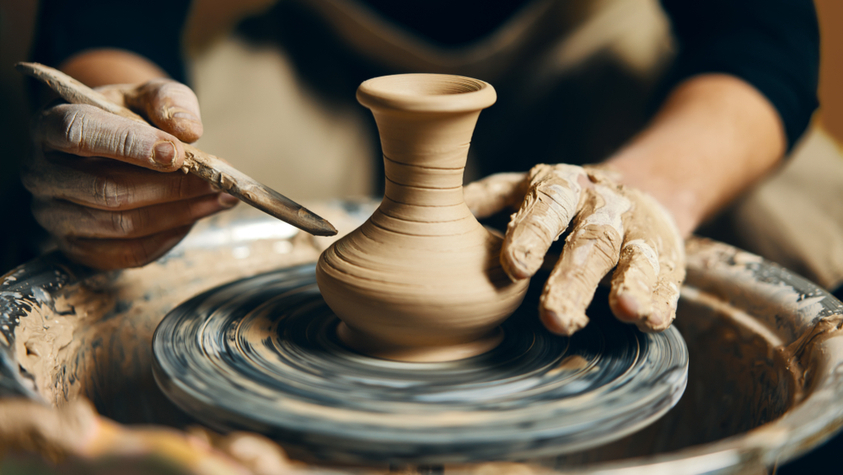Ceramic is derived from the Greek word keramos, which means baked pottery or object. In fact, the origin of this science is the same pottery made by early humans. In fact, before the discovery and use of metals, humans used clay flowers due to their abundance and also their very good formation when mixed with water and their relatively low cooking temperature. Aluminosilicates, which are considered clay soils themselves, are made of the elements aluminum, silicon, and oxygen, which together make up about 85% of the Earth's solid crust. These three elements are the most abundant elements in the Earth's crust.
Akairan: The pottery industry was very advanced in 4000 BC. Now, we define ceramics in general as the art and science of making and using solid objects whose main and main constituents are inorganic and non-metallic materials, and the study of the structure and properties of such materials is also part of this science.
Materials (usually solids) that are mostly non-metallic and inorganic are called ceramics. This definition includes not only ceramics, porcelain, refractories, structural clay products, abrasives, cement and glass, but also ceramic magnets, glazes, ferroelectrics, glass-ceramics, nuclear fuels. Oh, and so on.
Classification of ceramics
Ceramics are classified in terms of application as follows:
Traditional (silicate) ceramics
Modern ceramics (engineering)
Oxide ceramics
Non-oxide ceramics
Oxide ceramics in terms of physical structure can be classified as follows:
Modern monolithic ceramics (integrated)
Modern composite ceramics
An important feature of ceramics that is familiar to everyone is their brittleness and failure with little or no change in form. This behavior is different from the behavior of metals that give in and change shape. As a result, ceramics can not be formed by the method used for metals. Two major methods have been developed for shaping ceramics.


